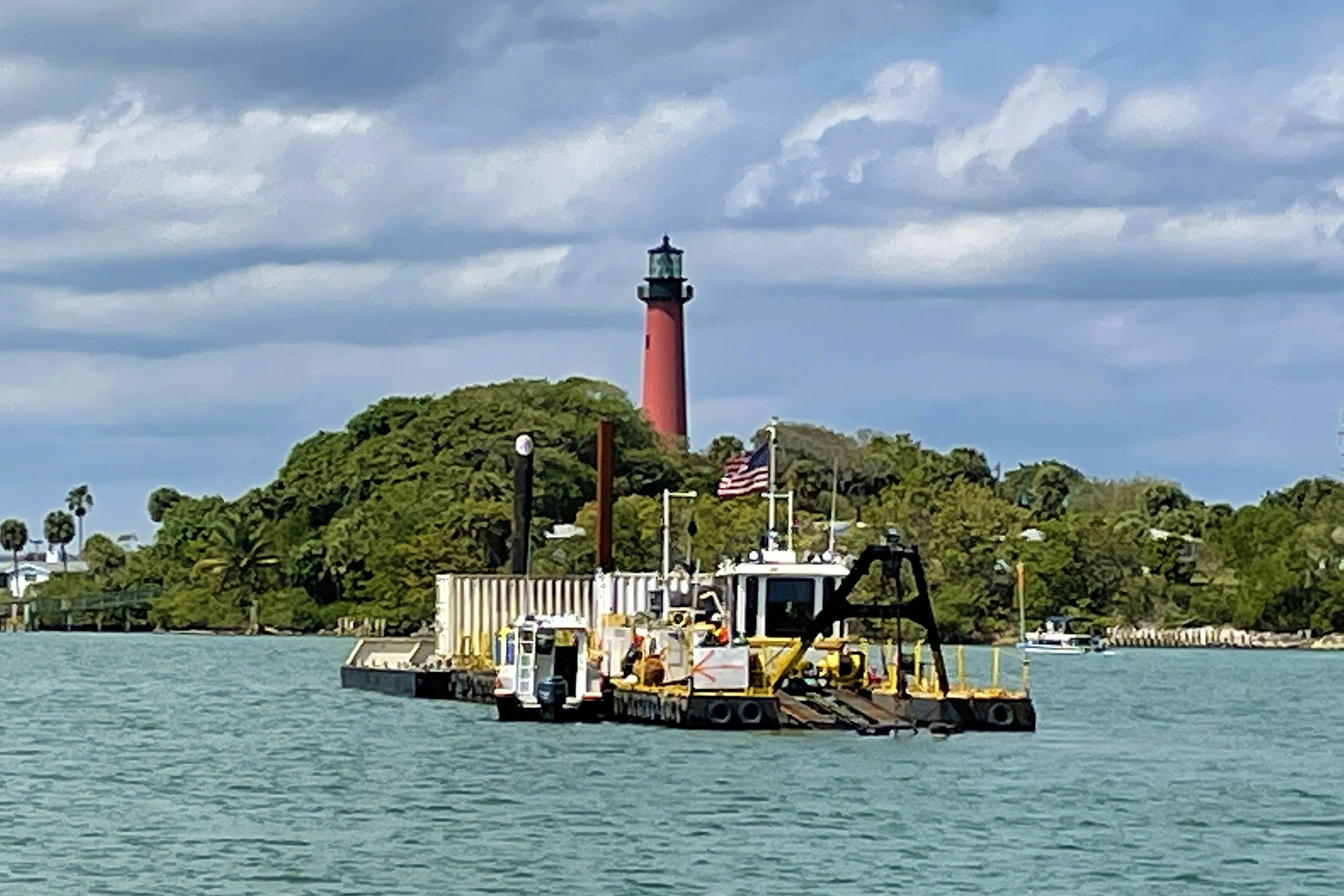2020-2021 Jupiter Inlet District Dredging Project

The Jupiter Inlet District dredges sediment that migrates into the inlet system from the 6.58-acre sand trap located 1,000 feet West of the inlet mouth for bypass onto beaches South of the inlet to counter erosion and to ensure safe passage per our charter.
Sand is in constant, natural motion along our coast as an ephemeral system. Construction of inlets in the early 20th century interrupted the natural North to South flow of sand along the East coast, known as littoral drift, and increased erosion. Sand bypass and beach renourishment projects have been proven effective in treating erosion to stabilize Florida’s coastlines and restore the natural sand transport system.
Working with the District's engineer of record and Coastal Dredging Company, the 2020-2021 dredging project removed 125,000 cubic yards of beach-quality sand for placement on a beach fill template developed by coastal engineers. Sand is placed on a mile-long stretch of beach that runs from Jupiter Beach Park to Carlin Park and is denoted by Florida Department of Environmental Protection (FDEP) R-monuments, R 13.5 to R 19. These R-monuments are spaced at 1,000-foot intervals along the Florida coastline.
Projects are permitted through the US Army Corps of Engineers and the Florida Department of Environmental Protection (FDEP) and adhere to strict environmental protocols with biological monitoring to ensure the protection of natural resources and important marine habitats, including sensitive seagrass beds. With a high volume of sea turtle nests on area beaches, all projects are scheduled outside of sea turtle nesting season which runs from March-October. The District routinely works the Loggerhead Marinelife Center that monitors nesting activity and its partners at Palm Beach County to make sure nesting is not adversely impacted.
Dredging began in January 2021 and due to a contractor delay, was completed in May. Taylor Engineering secured a one-time permit extension from federal and state regulatory agencies with a plan in place to prevent any impacts to critically important sea turtle nesting habitat.
The project was coordinated with the U.S. Army Corps of Engineers (USACE) and Florida Inland Navigation District (FIND), responsible for dredging adjacent areas of the Intracoastal Waterway (ICW). Total cost of the project was $1,941,335 and the District secured cost-sharing from the Florida Department of Environmental Protection's (FDEP) Beach Management Assistance Program. This cost-share funding is specifically earmarked for coastal and inlet management by the Florida State Legislature .
For more information about the project, contact the District at (561) 746-2223.
